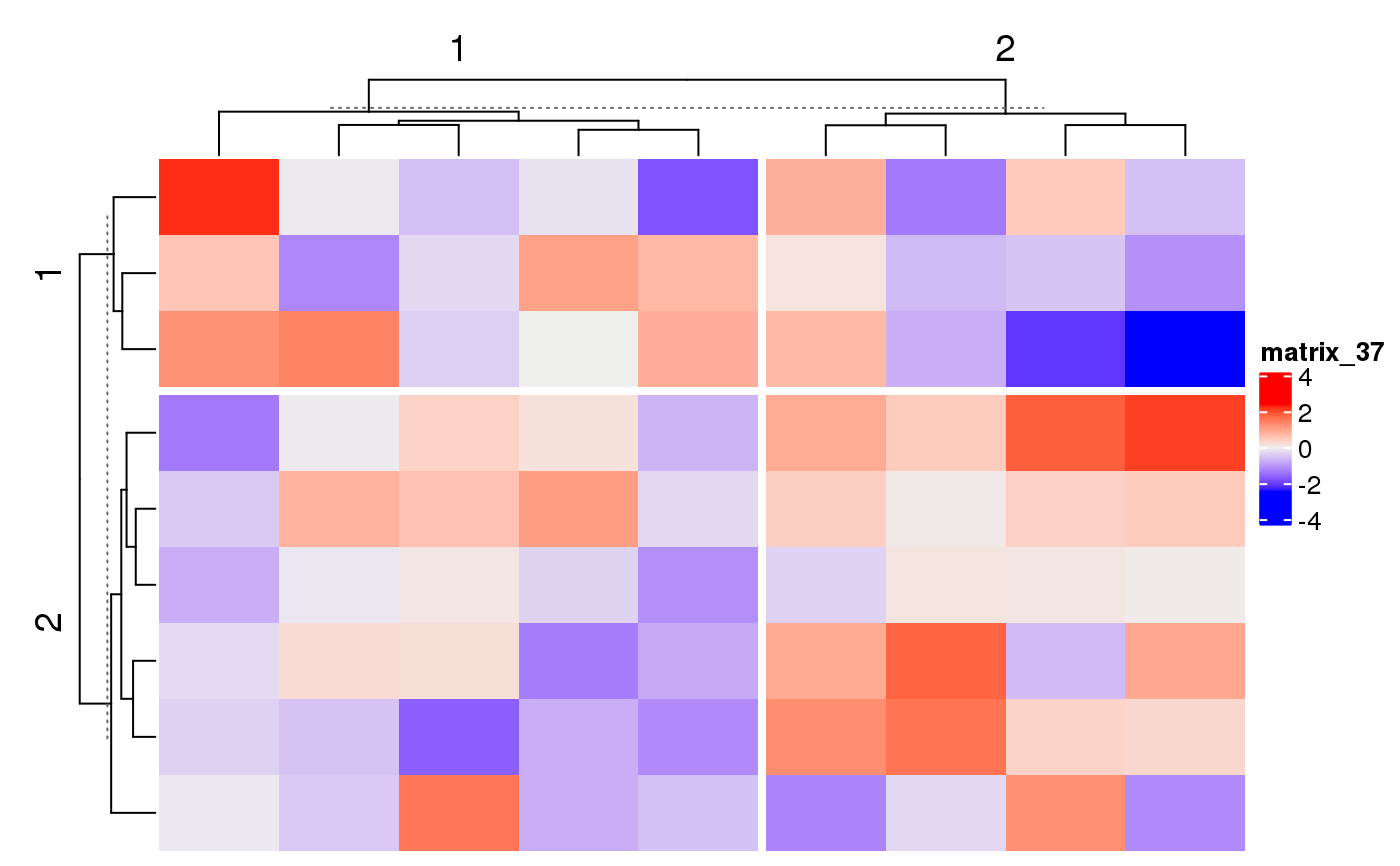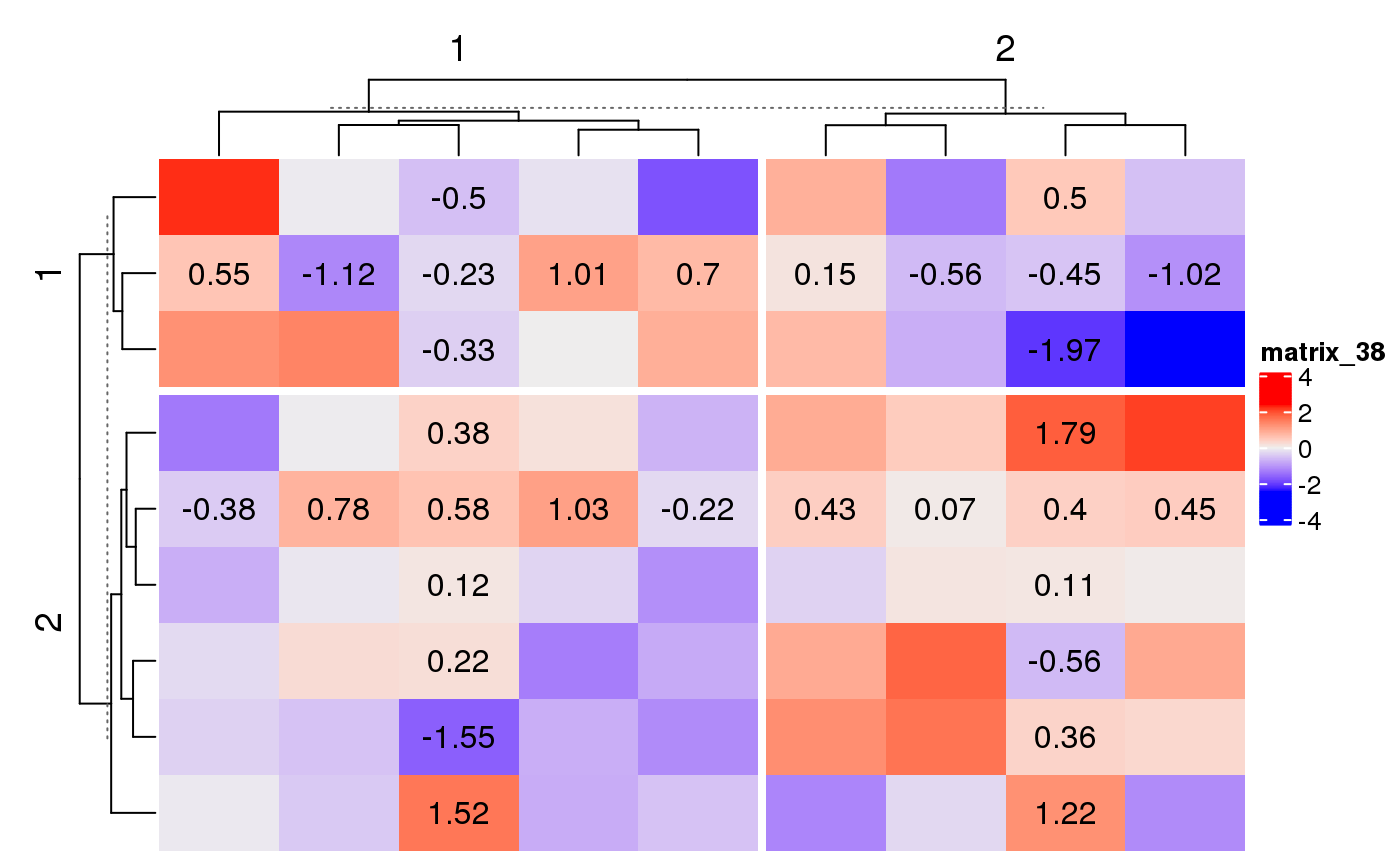Restore the index vector to index matrix in layer_fun
restore_matrix.RdRestore the index vector to index matrix in layer_fun
restore_matrix(j, i, x, y)
Arguments
| j | Column indices directly from |
|---|---|
| i | Row indices directly from |
| x | Position on x-direction directly from |
| y | Position on y-direction directly from |
Details
The values that are sent to layer_fun are all vectors (for the vectorization
of the grid graphic functions), however, the heatmap slice where
layer_fun is applied to, is still represented by a matrix, thus, it would be
very convinient if all the arguments in layer_fun can be converted to the
sub-matrix for the current slice. Here, as shown in above example,
restore_matrix does the job. restore_matrix directly accepts the first
four argument in layer_fun and returns an index matrix, where rows and
columns correspond to the rows and columns in the current slice, from top to
bottom and from left to right. The values in the matrix are the natural order
of e.g. vector j in current slice.
For following code:
Heatmap(small_mat, name = "mat", col = col_fun,
row_km = 2, column_km = 2,
layer_fun = function(j, i, x, y, w, h, fill) {
ind_mat = restore_matrix(j, i, x, y)
print(ind_mat)
}
)
The first output which is for the top-left slice:
[,1] [,2] [,3] [,4] [,5]
[1,] 1 4 7 10 13
[2,] 2 5 8 11 14
[3,] 3 6 9 12 15
As you see, this is a three-row and five-column index matrix where the first
row corresponds to the top row in the slice. The values in the matrix
correspond to the natural index (i.e. 1, 2, ...) in j, i, x, y,
... in layer_fun. Now, if we want to add values on the second column in the
top-left slice, the code which is put inside layer_fun would look like:
for(ind in ind_mat[, 2]) {
grid.text(small_mat[i[ind], j[ind]], x[ind], y[ind], ...)
}
Examples
set.seed(123) mat = matrix(rnorm(81), nr = 9) Heatmap(mat, row_km = 2, column_km = 2, layer_fun = function(j, i, x, y, width, height, fill) { ind_mat = restore_matrix(j, i, x, y) print(ind_mat) })#> [,1] [,2] [,3] [,4] [,5] #> [1,] 1 4 7 10 13 #> [2,] 2 5 8 11 14 #> [3,] 3 6 9 12 15 #> [,1] [,2] [,3] [,4] #> [1,] 1 4 7 10 #> [2,] 2 5 8 11 #> [3,] 3 6 9 12 #> [,1] [,2] [,3] [,4] [,5] #> [1,] 1 7 13 19 25 #> [2,] 2 8 14 20 26 #> [3,] 3 9 15 21 27 #> [4,] 4 10 16 22 28 #> [5,] 5 11 17 23 29 #> [6,] 6 12 18 24 30 #> [,1] [,2] [,3] [,4] #> [1,] 1 7 13 19 #> [2,] 2 8 14 20 #> [3,] 3 9 15 21 #> [4,] 4 10 16 22 #> [5,] 5 11 17 23 #> [6,] 6 12 18 24set.seed(123) mat = matrix(round(rnorm(81), 2), nr = 9) Heatmap(mat, row_km = 2, column_km = 2, layer_fun = function(j, i, x, y, width, height, fill) { ind_mat = restore_matrix(j, i, x, y) ind = unique(c(ind_mat[2, ], ind_mat[, 3])) grid.text(pindex(mat, i[ind], j[ind]), x[ind], y[ind]) })

